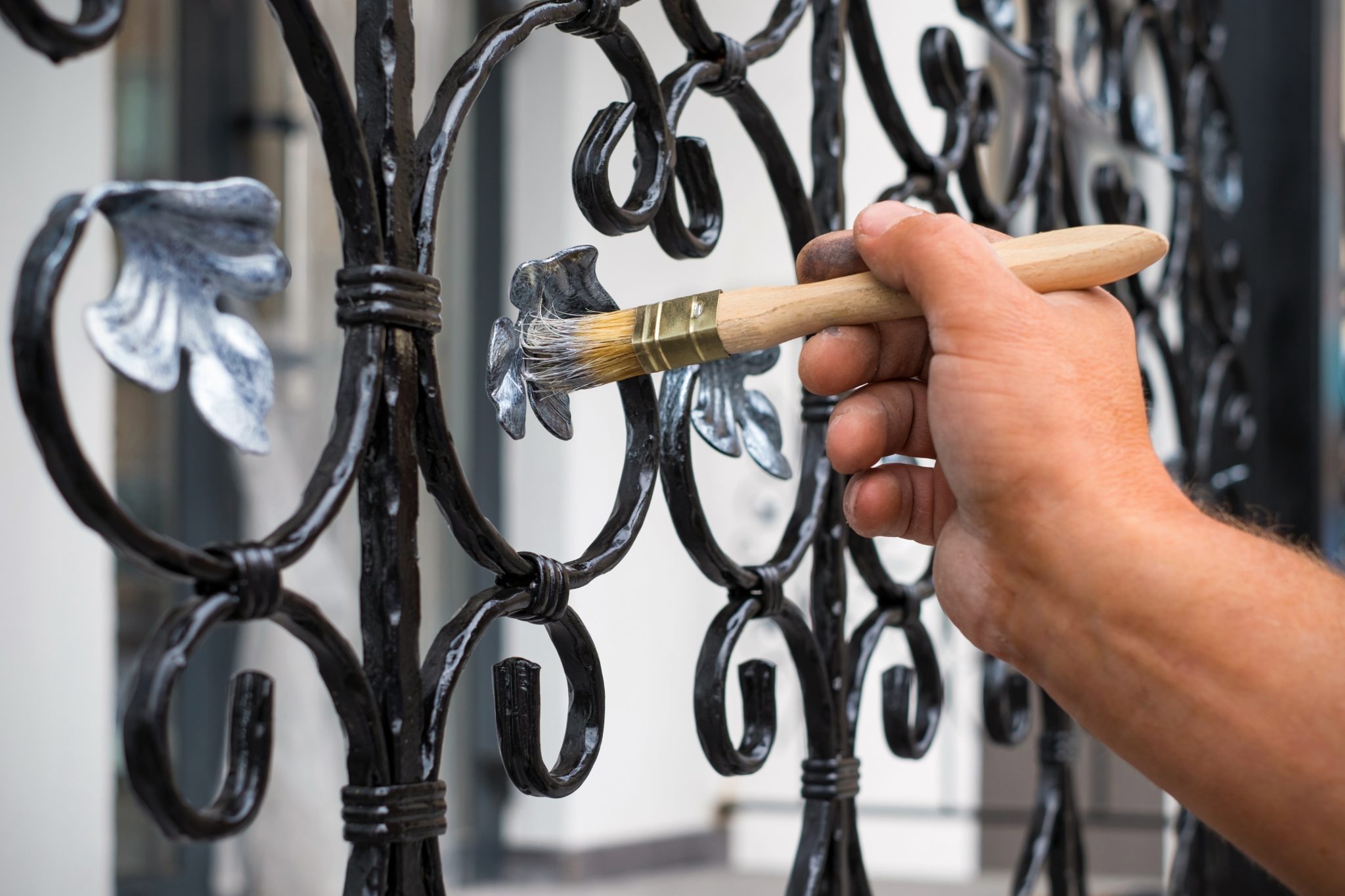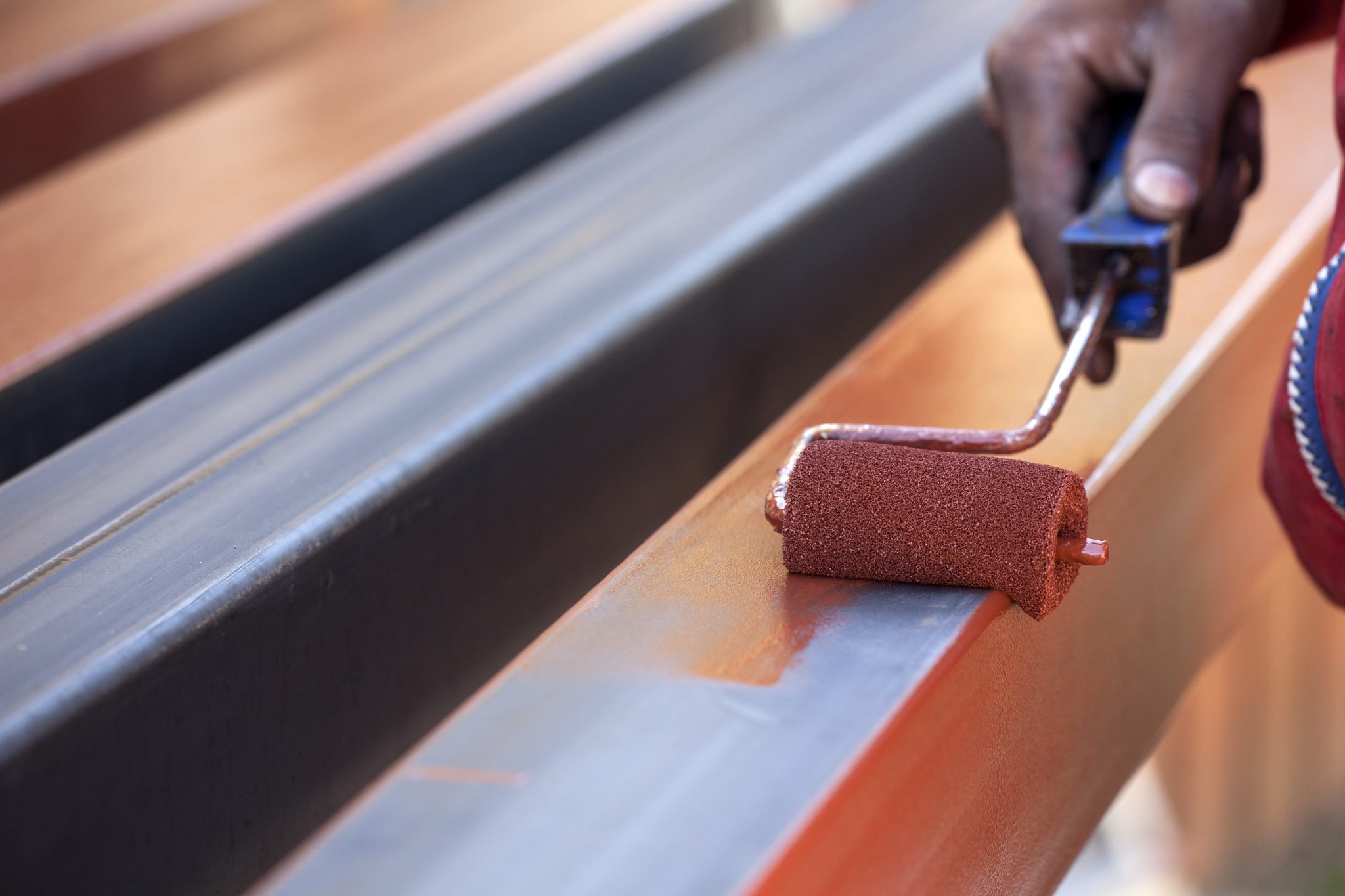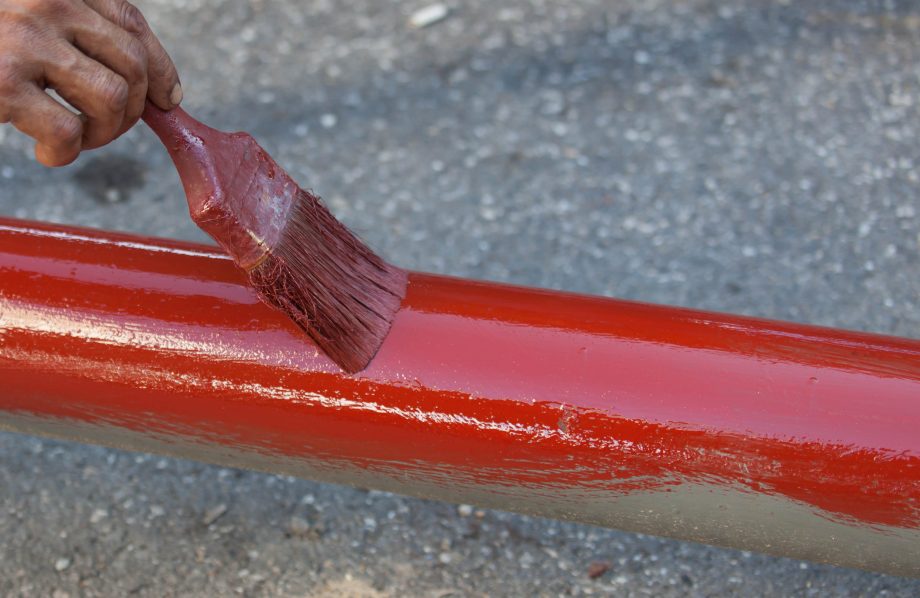Looking to paint metal? Look no further! If you are lost and unsure which metal paint is best for your project you are in the right place. In this article we go back to basics and discuss metal paints and the ranges available.

What Kind of Paint Do You Use for Metal?
It’s essential to use specialised formulated paint for the right type of metal. What is it you are looking to paint? Does it rust? Is it galvanized? Is it a barbecue? Or is it something else entirely? Each type of metal substrate has different requirements and therefore different paints to withstand the circumstances.
Another question to ask yourself is how long you want your coating to last. Also ask yourself what exactly you are expecting the paint to do. Do you want the coating to last for years to come? Does the metal paint need to prevent rust? Do you just want to provide a decorative coating?
As you can probably tell, buying the correct metal paint can be a bit of a minefield. To get you started we have a number of metal paint categories on our website to narrow down the options available:
- Heat Resistant Metal Paint – suitable for barbecues, fire pits, chimineas
- Decorative Steel Coatings – for metal features, exposed metalwork, metal garden features and more
- Street Furniture Painting – for example railings, metal benches and garden bistro sets
If you would prefer our technical team to just tell you what’s the best metal paint to use, just give them a call on 01462 421333. The technical team have a wealth of manufacturer trained knowledge and will take your circumstances into account to find the best metal paint for your project and expectations.
Whichever type you choose, you still need to do the correction preparation for it to last.

Preparation: How Do You Get Paint to Stick to Metal?
Preparation styles are different depending on the product you are looking to use and the type of metal you are looking to paint. Typically these are the usual methods:
Blasting – this involves professional equipment that provides industrial levels of cleanliness to metal. Take a look at this article to find out more: Sandblasting Methods For The Preparation of Steel. Depending on the coating system you are looking to use, different levels of preparation may be required. Levels of cleanliness take formats such as SA2.5.
Chemical Preparation – When blasting is not possible, preparing galvanised steel is best achieved with the use of mordant solution. These products are sometimes called T wash. Simply apply the T wash to new and unpainted galvanised steel and it will turn black when the salts have been neutralised. Wash with clean water, allow to dry. Then the galvanized steel is ready for painting. Weathered galvanized steel is galvanized steel that has been left outside to weather. Weather galvanized steel will have a matt appearance, whereas new galvanized steel is shiny. Weathered galvanized steel may just require cleaning prior to painting.
Most of the industrial manufacturers have their own branded mordant solution. For example, if you are looking to use a PPG metal paint, it is best to use the PPG mordant solution if that is your method of preparation. Keeping within brands per project area is best.
Manual Preparation – this includes wire brushing and sanding. This is typically performed by the DIY market or on awkward metalwork such as railings. See this article to find out more: Metal Railing Paint Recoating in Luton, Beds.
After the removal of any rust or old flaking paints, most metal paint systems require the surface to be thoroughly degreased. As always, if you have a questions regarding which route is best preparation for your metal, contact our technical team for advice.
Application: Do I Need to Prime Metal Before Painting?
Once again, this depends on the type of metal and the paint system you are looking to follow. Some coating systems require multiple layers of paint to reach specifications, some only require a few coats.
We have an extensive range of metal primers. Take a look at these categories and you will realise it might just be easier to follow an existing system rather than make it up as you go along! We have:
- Metal primers that aid adhesion
- Anti corrosive single pack primers
- Anti corrosive two pack primers
- Metal primers for atmospheric and immersion
- Shop primers
- Single pack zinc phosphate primers
- Two pack zinc phosphate primers
- Zinc rich metal primers
- and if that wasn’t enough…Miscellaneous metal primers!
So, do you need to primer metal before painting it? More than likely! Always refer to product data sheets and system data sheets before applying. Doing your research first, or letting our technical team do it for you, will make the process run much more smoothly.

Application: How Do You Properly Paint Metal?
Depending on the metal paint, some types will recommend application via brush or roller. Some however recommend application via spray. As we have said before, always refer to the product data sheet for full application guidance. Within these PDF’s you will find the exact tools and set up required to get the best finish.
A general rule of thumb is if the solvent in the paint is either water or white spirit, you can apply the paint by brush or roller. But if the solvent is cellulose or contains xylene, you will need to apply it via spray.
Below are a few metalwork case studies to show you how the professionals work:
- Static Caravans: Using Peganox Metal Roof Paint
- How to Paint Metal using Rust-Oleum Noxyde
- Van Paint: A How To Guide for The Mobile Catering Industry
- Best Practices: Applying Horsebox Paint
- Using Zinga To Paint A Power Pylon
However, metallic effect paint will always look better when sprayed on. If you apply it via roller or brush, the metallic pigments will be pointing in the same angle as the brushstroke. Unless the whole surface is done evenly, which is pretty impossible to do by hand, once the paint is dry you will be able to see the brushstrokes. By applying the paint via airless or conventional sprayer, the metallic pigments are more at random. This will provide a more ‘shiny’ effect when dry.
Conclusion
It’s important to know how to paint metal properly. If you have any questions please ensure to contact our technical team for guidance. We have a wide range of clientele, from contractors painting bridges for Network Rail, to Mrs Smith looking for barbecue paint. No matter your prior knowledge, or the scale of the job at hand, our technical team provide manufacturer approved knowledge. Contact us on 01462 421333.
Promain supply a huge range of metal paints. Take a look at our product categories below:
- 2 Pack Epoxy Paints
- 2 Pack Polyurethane Paints
- Cladding Coatings
- Cleaner Degreasers
- Decorative Steel Coatings
- Galvanizing Paint
- Hammered Finish Paint
- Heat Resistant Paint
- Highways Agency Item No.
- Metallic Paint
- MIO (Micaceous Iron Oxide) Paints
- Pipe Line Repairs and Coatings
- Tank Linings
- Rust Converters
- Street Furniture Coatings
- Structural Steel Paint
- Thinners Degreaser
- Tractor Enamel

